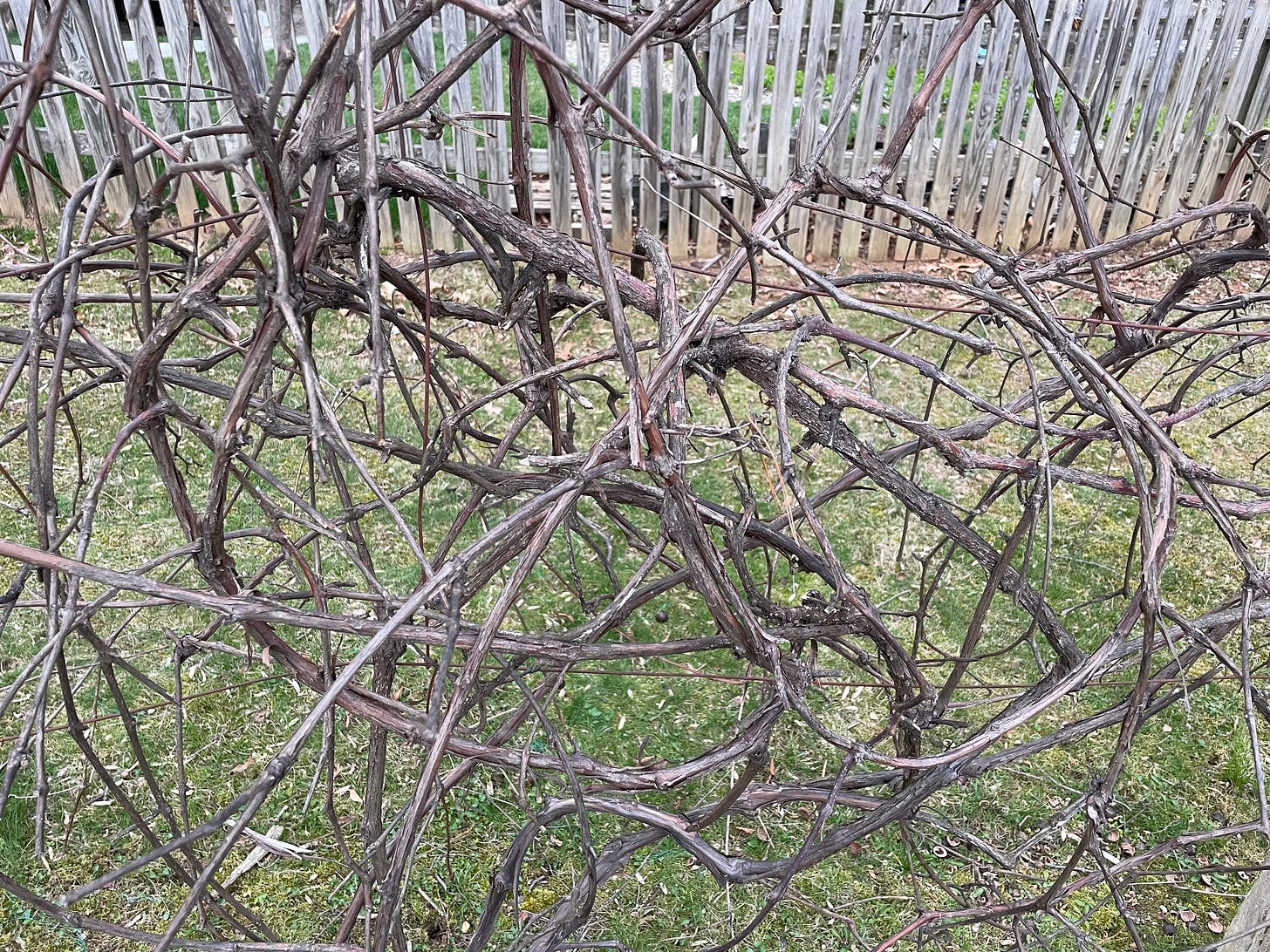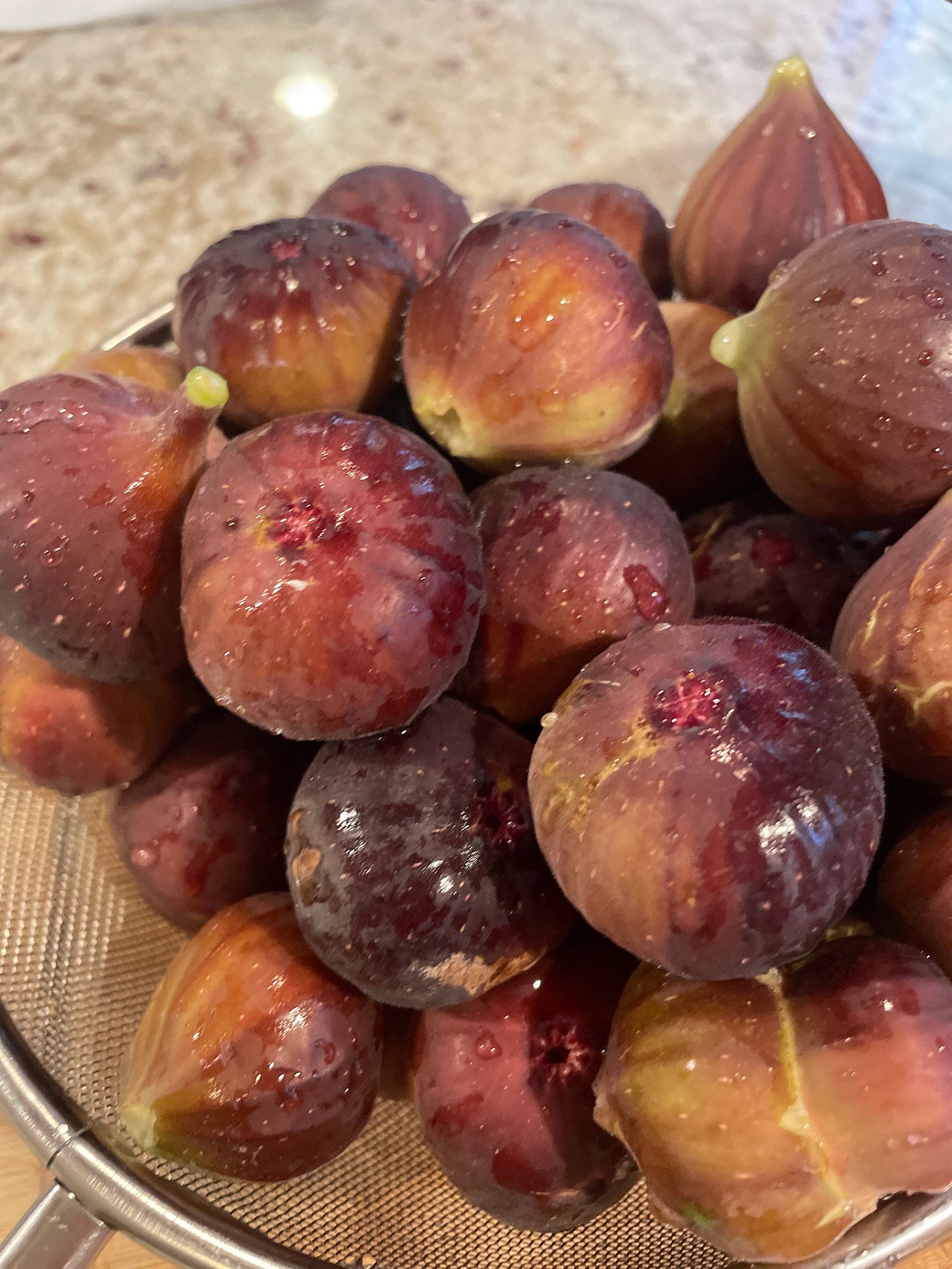On Pruning & Pausing
Learning to cut away, to leave space, to listen
When I told my husband I was planning to do some long-overdue pruning in the backyard, he didn’t know I meant right-this-minute and with the extended-handle chainsaw while the three kids looked on.
I have been known to suffer from springtime anxiety (def): a feeling that everything that “should” be done in the yard whilst it is spring should be done the minute I decide it is now spring.
Or should I say my family suffers from this condition? Together, this form of anxiety and I can turn a lovely afternoon into a, “Quick, before the sun goes down!” frenzy of weeding, seeding, watering and, yes occasionally, hack-job pruning.
I am not skilled at the extended chainsaw and — though I’ve yet to admit it to my husband — I cut off more than intended from the top of the beautifully-budding peach tree. I was kept from further carnage that afternoon. But the pruning bug was still biting.
It wasn’t until this week — which is both Holy Week (inspiration to write a hundred things!) and my kids’ spring break (reality that I will have virtually no time!) — that I realized there was something deeper beneath my frenzied first attempt at pruning.
There was restlessness. And I’m just beginning to name why.
One reason, perhaps, is that I just finished writing and releasing a book, and I’m not quite sure what to do with myself next. Something in me is itching to step toward the next big project, or to at least know what it might be. But something else in me is hesitant, pumping the brakes, nudging me to pause and to assess first where things are now.
I am learning to see these periods of restlessness — these times between the questions and the answers — as preparatory. Looking back, we can often see that the wrestling we did when we weren’t sure what to do next somehow helped prepare us for it.
But this period of restlessness seems to have another element to it, an invitation to not only pause but to also prune.
What is it that has been overfull, that might need to be trimmed back? What needs to be cut away entirely? What are the good things that I really want to stay but that are getting in the way of the better things?
I don’t know about you but I hate the idea of pruning my actual life. I would much rather prune the fig tree or the grapevines. Considering what might need to be cut back from my schedule, my work, my relationships — that sounds painful.
It probably sounded painful to the disciples too when Jesus told them in his farewell message, “Every branch in me that does not bear fruit, [God the gardener] takes away; and every branch that continues to bear fruit, He [repeatedly] prunes, so that it will bear more fruit [even richer and finer fruit]” (John 15:2 AMP).
In this illustration, I would much rather be the branch that bears fruit and is repeatedly pruned than the branch that is taken away. I would much rather live with branches that are pruned and planned than responding to a series of broken and dead ones.
In his book Necessary Endings, Dr. Henry Cloud (of the Boundaries books) writes that the gardener intentionally prunes branches and buds that fall into three major categories:
“1. Healthy buds or branches that are not the best ones,
2. Sick branches that are not going to get well, and
3. Dead branches that are taking up space needed for the healthy ones to thrive.”
That first category is a doozy. I can do away with the obviously dead and unhealthy aspects of my life. Even if it’s still a struggle to cut, I can see clearly that certain sin patterns and habits are dead branches in need of clearing.
But the seemingly healthy? The many good works that I could do? In the moment, it feels so much easier to just do some next thing than to wrestle with whether it’s the right thing at the right time for the right reasons. Sometimes we can’t imagine — let alone produce in ourselves — all the rights. So maybe we need to begin by learning to recognize the wrongs. By pruning.
I thought of this earlier this week when I headed outside, this time with handheld clippers, to prune the overgrown fig. I had done enough reading to know that I had virtually no idea what I was doing… but that doing seems to be the best way to learn.
I started with the branches that were overlapping and would, once the leaves came in, keep the fruit on both from getting the sun it needs. I chopped most of the tallest branches, prioritizing the lower ones that we’d be able to reach for picking fruit in late summer. I thought of how thick and dense and buggy this forest of a fig tree gets, of how each trim was reining in the problem I hadn’t made time to address earlier.
Eventually, my husband came out to help. He stood at a distance while I worked up close to the branches, telling me if there was one I couldn’t see from my angle, or a cut that needed to be reconsidered. (And don’t we all need an outside opinion in our pruning?) It felt good to cut off years of dead weight, to find fresh hope for a fuller harvest to come — even if it meant sacrificing some of the volume of figs this year. We can never pick them all anyway, especially the ones that are out of reach.
Sure, it felt risky to start the cutting I’d been thinking about for weeks. It felt safer and easier to research it a bit more, to make sure I knew what I was doing. But I knew enough to act on a bit of it now, to start cutting and to learn from the harvest to come.
Now, will I have the courage to do the same sort of pruning in my actual life? There are things that have slowly become more than they’re worth, like me standing on stools to reach the top fig fruits I was too chicken to trim last year. I see now that the fruit was getting smaller and less sweet over time. Cutting some of it this year means trusting the wisdom of others, trusting that pruning is almost always a counterintuitive activity that brings a counterintuitive abundance. Even if I have to wrestle with myself to receive it.
This is the week we remember Jesus cursing and killing a fig tree for not producing fruit. How many years of pruning had God’s people ignored? How many years of necessary pruning will I ignore before I see the need to cut back, to make space, to wait and to see what’s next?
This Holy Saturday, I will remember the value of waiting in between the cutting and the growing, the darkness and the dawn. I will wonder with the disciples how anything good could possibly come from this carnage. And I will stand all the more amazed, again, at the harvest of Resurrection.
Find a list of my latest podcast appearances & where to order We Shall All Be Changed: How Facing Death with Loved Ones Transforms Us on my website.
.







I love this analogy on pruning, Whitney. So important (especially these days). Hope you're well this week? Cheers, -Thalia
Lovely to meet you at Hope Words, Whitney. I just read this latest post and you’re writing voice is delightful. Thank you for these well-crafted words. Looking forward to opening your book!